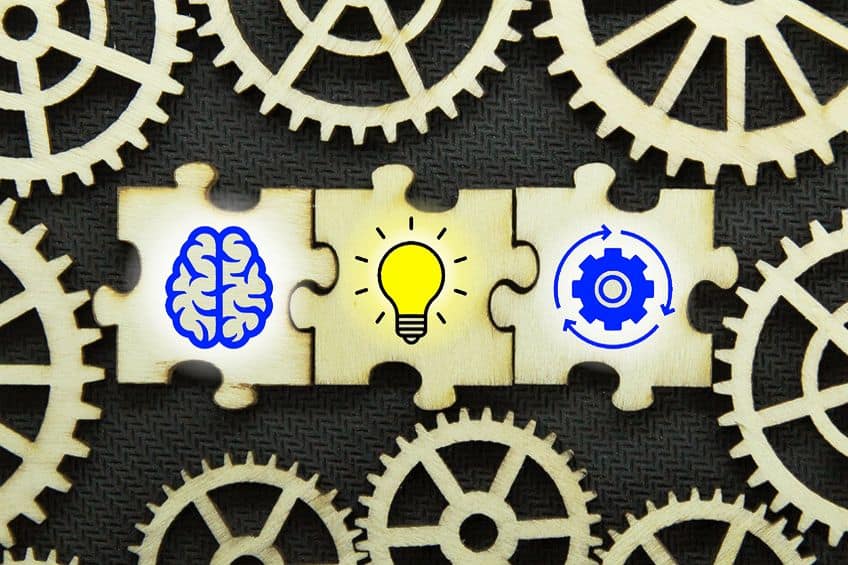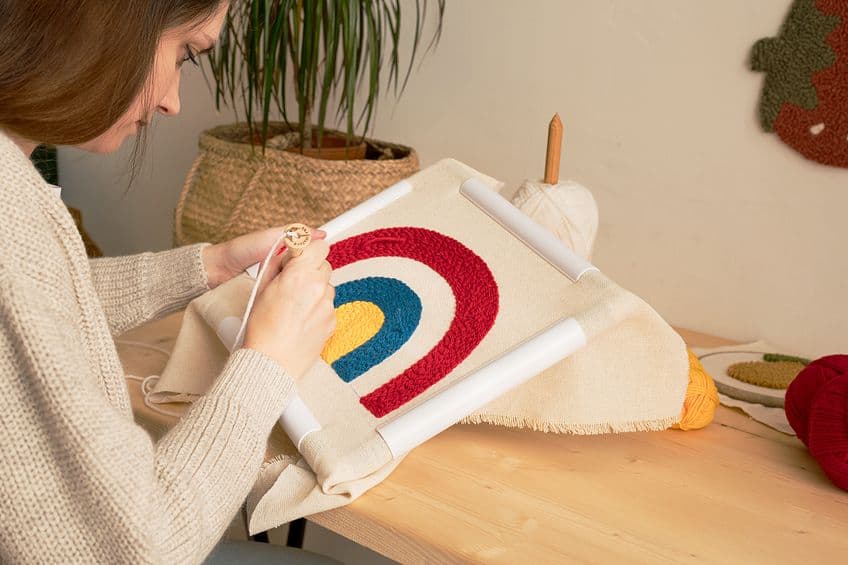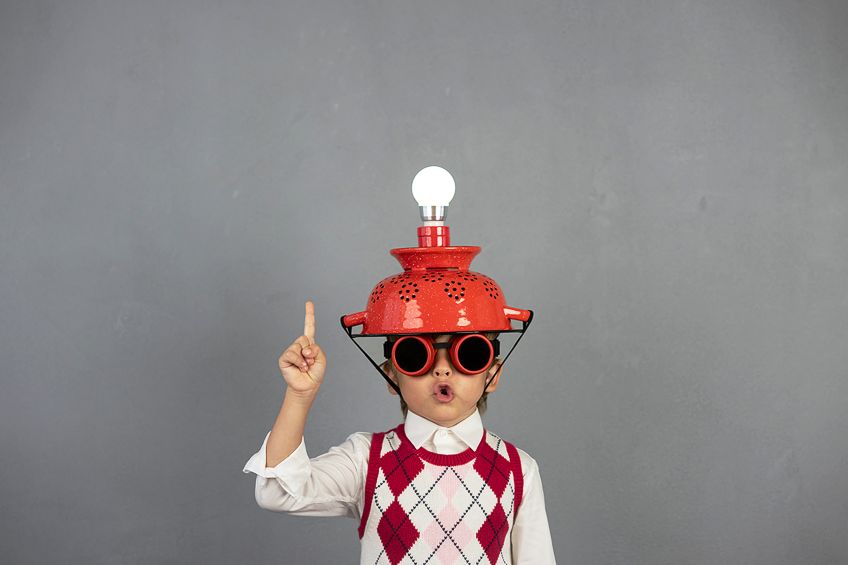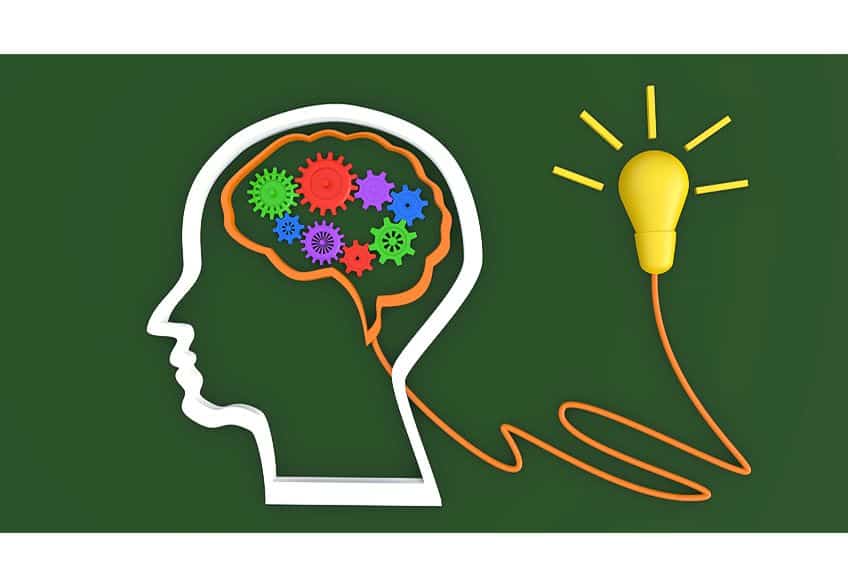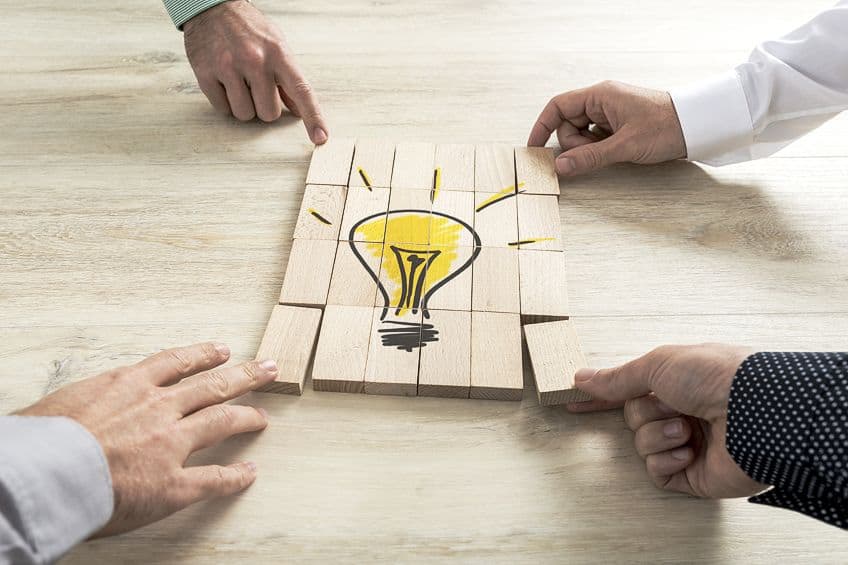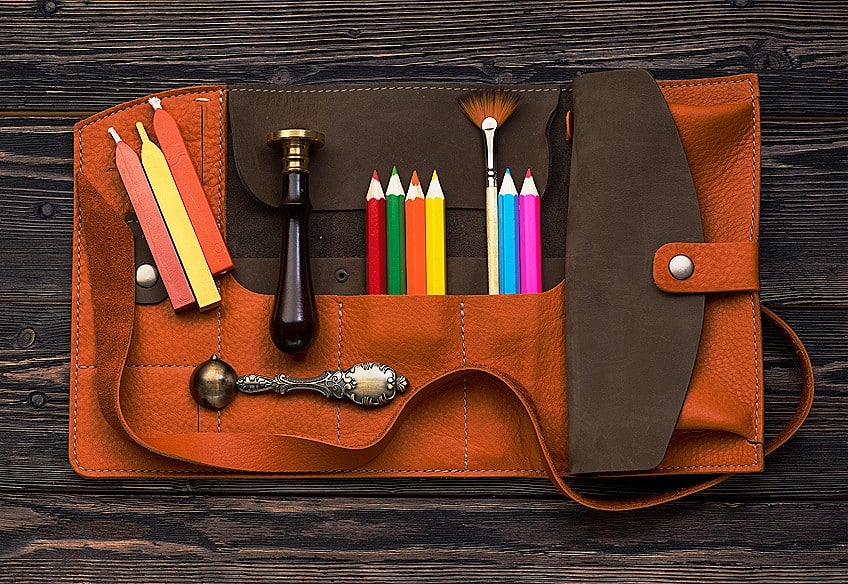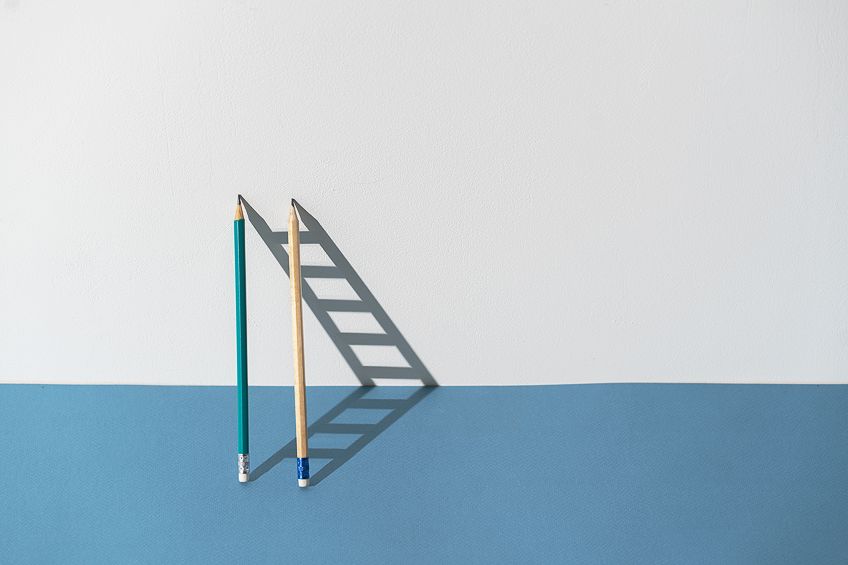What Is Creativity? – Explanations On What Creativity Is
Creativity has driven the progression of humankind for millennia, and it is one of the most complex cognitive tasks that we can perform. You most likely have an innate understanding of creativity, however, if you were asked to explain it you might struggle to find an exact creativity definition. In this article, we will be exploring questions around creativity, including what creativity is, if some people are just inherently creative, and if you can learn and hone it just like any other skill.
Contents
What Is Creativity?
People across all disciplines from psychology and business studies to mathematics and engineering have been interested in human creativity. There have been many different ways to conceptualize and define creativity over the years and as such, there are an array of different creativity definitions. This is one of the factors that makes creativity particularly difficult to study.
Past Creativity Definitions
Although creativity as a skill has existed since our ancestors walked the earth, the concept of creativity was only recognized around 80 years ago. The term creativity has only been used as a trait to describe someone in the last 50 years. Before this, innovations were seen as discoveries and artworks as capturing the world and experiences around you instead of the product of creativity. Ancient scholars from Greece, China, and India saw art as a form of discovery, not creativity.
Creativity has also been seen as inspiration from the divine, particularly during the medieval Christian era.
Modern Creativity Definitions
A more modern definition of creativity is the capacity to go beyond traditional viewpoints and ways of thinking, and work to transform this into new and unique concepts, techniques, or objects. Creativity can be used to create an idea, artwork, composition, new technological advancement, or even a scientific theory. If you only had a unique idea but did not use it, then you would be considered imaginative instead of creative. The act of taking this unique perspective and making them a reality by producing something new is what is known as creativity.
Creativity Psychology Definition
Modern ideas of creativity began with the emergence of the psychology discipline in the early 20th century. At this time, scholars focused on the individual and their distinctive personalities and capabilities, which prompted them to ask the question, “what is creativity?”
The creativity psychology definition is characterized by the ability to see the world from different views and in new ways.
Creative individuals can find connections that are overlooked or may seem unrelated and come up with solutions. These connections are found based on your internal knowledge, insight, inspiration, and past, which are recombined into innovative and exciting ways to produce something new and unique. As you can see, creativity is based on two key elements: thinking and producing. If you only had a unique idea but did not use it, then you would be considered imaginative instead of creative
Many equate creativity to artistic ability, but this is not accurate. While creativity can lead to great and inspiring works of art, it can also be used to find previously unthought-of solutions to problems. Creative individuals can more easily recognize the shortfalls and limitations that exist and come up with ways to improve or overcome them.
The complexity of creativity means that there is no one source of it. When you are being creative, you draw from your past experiences, imagination, and other subconscious processes.
You also deliberately think and actively try to manipulate scenarios and objects in your mind. Creativity is a combination of not only conscious and unconscious thought, but your personality as well. Human creativity is so complex that only in recent years has it been understood enough to try and replicate it in AI (Artificial Intelligence). Luis De Garrido launched a preliminary study in 2022 that attempted to break down human creativity and recreate it in AI; however, it is so complex and draws from so many neurological and cognitive domains that they were not able to produce a definitive result.
Where Is Creativity Created in the Brain?
There has been a long-standing myth that so-called “right-brained” people are more creative, whereas “left-brained” individuals are more analytical, however, this has been proven to be untrue. While it is true that the right hemisphere is responsible for associative processing, which is our ability to combine seemingly unrelated concepts into useful ideas and something that forms a cornerstone of the creative process, it is not the only process used in creativity.
The human brain has something called lateralization of function, which is where a process or task is mainly done in one hemisphere.
However, although one-half of the brain may work harder when performing certain skills both sides, or hemispheres, of the brain are involved in many of these functions. It is the different areas of the brain working together that creates cognition and skills and this is no different with creativity. Visual, language, motor, comprehension, and executive functions such as decision-making and planning, are all produced in different regions of the brain and combine to enable you to think in new and abstract ways.
Brain Pathways for Creativity
Through research, neuroscientists have identified large brain networks that are important for creativity. They are called the executive attention network (EAN), the default mode network (DMN), and the salience network. These pathways and networks are not fixed and every time they are activated, its structure is slightly different, which is what allows you to solve the same problem in slightly different ways every time.
The EAN directs your attention and helps you to stay focused on the problem.
It supports creativity by blocking out irrelevant knowledge and helping you plan things out step by step. The DMN is activated by your own inside thoughts when your mind is not focused on the world around you like when you are daydreaming, thinking about the future, or different people’s perspectives. It starts to solve the problem unconsciously in different ways after the EAN has given up, this is why you might have a “eureka” moment while in the shower hours after you have stopped focusing on the problem.
The salience network is responsible for, amongst other things, switching between the two other networks and deciding when they should work against each other and when they should work together. The collaboration between these three networks is what drives your creativity as the more actively they work together, the more your creative ability. Viewing the same thing from different perspectives is key to being creative as it allows you to create and explore different hypotheses and alternatives. Tests of creativity even use the number of unique alternatives you can generate to measure your creative skill as it speaks to much more robust mental processes.
Processes such as flexibility, inquisitiveness, and how you deal with ambiguity are all measured by this seemingly simple test.
Different Types of Creativity
The complexity of creativity means that there have been many attempts that have tried to distinguish between different types of creativity. From disparate forms and motivations to discerning social situations, there are many ways to classify creativity, but all uphold it as a vital skill in all facets of life.
Types of Creativity in Psychology
There are three types of creativity identified in psychology, namely transformational, exploratory, and combinational creativity. Transformational creativity entails ignoring fundamental rules and laws to create ideas that are both highly creative but also potentially impossible. Exploratory creativity involves trying to create novel ideas to solve a problem or just to generate new concepts. Combinational creativity is when you combine these two types of creative thinking into something that is both out-of-the-box and remains practical.
This is the most common type of creative thinking we engage in and has three categories: problem-driven, similarity-driven, and inspiration-driven.
Kaufman and Beghetto’s Four-C Model
James Kaufman and Beghetto used a four-c model to further describe the different types of creativity we see. The four-c’s are mini-c, little-c, pro-c, and big-c. Mini-C is the ability to find meaningful interpretations of personal experiences and actions. Little-C is the traditional understanding of creativity, which is artistic expression and everyday problem-solving. Pro-C is expert creativity, which is displayed by professionals in their fields.
Big-C is genius creativity and is creativity that is exceptional in the given field.
Creativity in the Workplace
Although many may believe that there is little use for creativity outside of the art studio, it is actually an invaluable trait to ensure success in the workplace. As society has become more interconnected so has the complexity of problems you may encounter in the workplace has increased. Creativity allows you to assess problems and look for new previously unthought of ways to solve them.
Creative individuals are more willing to take calculated risks to produce solutions that are both novel and appropriate.
A recent study by Adobe found that those who identify as creative individuals earned more than 17% than their peers who did not identify as creative. There was also a survey that found creativity was the most important trait identified by CEOs for business success. While these results are not definitive as many different things that can affect them, they do point to some promising data surrounding the benefits of creativity in the workplace.
Dark Creativity
Although creativity is usually seen as a positive trait, dark creativity, also known as malevolent creativity, is when individuals use their creative thinking in antisocial or harmful ways. Scammers are a good example of how creativity can be used to harm others as they devise clever and unique schemes to trick people. There are many theories around why certain individuals engage in this kind of behavior including high levels of narcissism, however, there is no one specific predictor or motivation.
All in all, creativity is neither a good nor bad skill, but a tool of our minds to enrich our thoughts and experiences in any direction we so choose.
Why Are Some People More Creative than Others?
You may think that some people seem to be inherently more creative than others, however, this is not because they are born with it but rather, because they have nurtured their creativity throughout their lives. The understanding of creativity as an innate ability or special talent is a myth.
Rather, more creative individuals tend to just have had more practice or experience thinking creatively.
These people may be more inquisitive or have had more opportunities to explore and because of this, they have more resources to come up with novel solutions. There are also no definitive studies that show that smarter individuals are more creative, in fact, intelligence and creativity are both very difficult to define and therefore difficult to measure in studies. There are many studies that show that the greater your episodic memory, which is your memory for storing all of your personal experiences, the greater your capacity for creativity. This is because we use our own memories and manipulate them to find these creative solutions and inspirations.
Characteristics of Creative People
Creative people are often considered to be independent and rebellious thinkers. They are playful but also disciplined and they have rich imaginations but can also be realistic. Creative people are known to be very passionate about their work, however, their ability to appreciate things from different perspectives means that they can be objective about their work as well.
Many scholars have attempted to link someone’s creative ability with their personality.
There are many different theories of personality and one of the most popular ones is a trait theory called the Five-Factor Model. The Five-Factor model consists of five trait dimensions that represent the core description of personality. The five traits are Openness, Conscientiousness, Extraversion, Agreeableness, and Neuroticism. This model is also known as the OCEAN model as it is an acronym for the traits.
Personality traits describe a consistent and enduring way of thinking, feeling, or behaving and they all exist on a continuum.
Higher scorers on the openness trait tend to be curious, imaginative, and artistic therefore this trait is the most important one for creativity. Other personality studies have shown that courageous people also tend to be more creative most likely due to their enjoyment of novel experiences.
Can You Learn Creativity?
There are long-held beliefs that only certain “gifted” people can be creative, but this has been proven false. You may feel that you have very little creative ability, however, this can be changed irrespective of how old you are or your level of experience. To improve your creative ability, you must learn how to skillfully apply your knowledge and experience to come up with new solutions and methods.
To think outside of the box, you need to step outside your comfort zone.
Expand your horizons by experimenting with novel ideas. Remember, taking breaks helps you to improve new skills by allowing the brain to relax and process the new information unconsciously. Many artists stop and take breaks doing an unrelated activity if they feel they have hit a creative wall, and this is often enough to spark some creative insight or even a breakthrough. With consistent and diverse practice you can easily develop your creativity.
How to Increase Your Creativity
There are many reasons you may want to be more creative including solving complex problems, being able to communicate your ideas better, or even just a desire for more novel and complex stimulation. A skill is something that can be practiced and improved, something specific to the person.
As with any skill, it can seem to come more easily to some than others, however, anyone can be creative with time, effort, and practice
As creativity is a skill, all skills are developed in our brains whether a physical skill such as riding a bike or a mental skill such as trigonometry. By practicing the skill, our brain fires neurons along the same path and with repetition, these paths become increasingly familiar until the action becomes ingrained.
As creativity is born from your experiences and knowledge, you can become more creative by exploring new things, experimenting, questioning your worldviews and assumptions, and creating things from your musing. There are a few different practices that you can engage in to foster your creativity:
- Increase your number of personal and emotional experiences and ensure they are as varied as possible. Tie them to the problem you are attempting to solve so that you are more likely to remember how you solved the problem in the future.
- Practice identifying connections and common patterns between different problems and schools of knowledge.
- Openness is very important to practice being open to different experiences including intellectual and emotional ones.
- Question conventions and rules and challenge common wisdom. Challenge your own perspective and preconceived ideas about the world to explore and experience different ways of thinking.
- Observe the behaviors of the people you interact with and look from their perspective to see other ways of doing things.
- Document the problem you are working to solve extensively and do not take the first solution but challenge yourself. The longer you work at it, the higher quality the final solution will be.
- Speaking of documentation, remember to record your thoughts and ideas as you have them. This prevents them from being forgotten if you are distracted and allows you to expand on them individually later and not lose your flash of insight.
- Remember to take periods of relaxation after spending long periods of time on dedicated problem-
- Finally, self-reflection is very important to the creative process, so take a step back now and then.
Remember, practice makes perfect so although you will have some mistakes, if you keep at it you will gradually improve your creative ability.
Creativity and Mental Health
Studies have found that psychotic disorders such as bipolar disorder and schizophrenia seem to be more common in highly creative individuals and their relatives. This is particularly seen in artists, writers, and musicians with many famous examples including Vincent van Gogh and Sylvia Plath.
Psychologists theorize that the inability of the highly creative to filter out seemingly irrelevant information is the cause of both their exceptional creative and problem-solving abilities as well as their disordered thoughts.
These people may experience a state called latent inhibition, which enables them to be more aware of different information that allows them to make more remote connections. This state can account for the far-reaching, often nonsensical, thinking seen in both psychosis and novel thinking. It is important to note that the degree of giftedness of the individual is important when considering their risk for mental illness. Generally speaking, creative individuals actually suffer from less mental illness on average compared to non-creative individuals.
It is only in cases where the person has exceptional creativity that they are more likely to experience mental health difficulties. Practicing creative thinking has also been shown to improve mental well-being. The objectivity and problem-solving skills you learn when developing your creativity can contribute to your ability for meaning-making. Meaning-making is an important tool that you use throughout your life that helps you to cope with past experiences and trauma, manage your moods, improve your relationships, and much more. Some psychologists even recommend that patients use creativity in the form of artistic expression to work through difficult feelings and achieve more peace of mind.
Psychology and other disciplines have contributed to our present understanding of creativity. Creativity is a skill that everyone can cultivate, and is one that is deceptively simple and pervasive at first but that opens to an intricate and illusive world under scrutiny. Like with any skill, success comes with proficiency and proficiency comes with consistent practice.
Frequently Asked Questions
How Do You Define Creativity?
The modern definition of creativity is the ability to see the world from multiple viewpoints, and identify unique connections that previously appeared unrelated. Creative individuals then use these unique perspectives to develop new solutions, techniques, or technologies. Creative individuals can use this skill to create new ideas, solutions, theories, or artistic works such as music or paintings.
How Can You Improve Your Creativity?
Creativity is a skill that can be improved through consistency and practice. Developing your creativity involves having more varied experiences, practicing making connections between seemingly unrelated topics, questioning existing rules and perspectives including your own, recording your thoughts and ideas, taking periods of relaxation while solving problems, and practicing self-reflection often.
What Are the Different Types of Creativity?
We use three main types of creativity to create new ideas and problem-solve. Exploratory creativity is used to come up with new concepts and problem-solving. Transformational creativity is your imaginative thinking, which ignores essential laws and tries to connect unrelated topics to produce inspired but often unrealistic ideas. Combinational creativity is when you use both exploratory and transformational creativity together. This is the type of creativity you use most regularly when you are working to solve a problem or make something unique.
Jordan Anthony is a Cape Town-based film photographer, curator, and arts writer. She holds a Bachelor of Art in Fine Arts from the University of the Witwatersrand, Johannesburg, where she explored themes like healing, identity, dreams, and intuitive creation in her Contemporary art practice. Jordan has collaborated with various local art institutions, including the KZNSA Gallery in Durban, the Turbine Art Fair, and the Wits Art Museum. Her photography focuses on abstract color manipulations, portraiture, candid shots, and urban landscapes. She’s intrigued by philosophy, memory, and esotericism, drawing inspiration from Surrealism, Fluxus, and ancient civilizations, as well as childhood influences and found objects. Jordan is working for artfilemagazine since 2022 and writes blog posts about art history and photography.
Learn more about Jordan Anthony and about us.
Cite this Article
Jordan, Anthony, “What Is Creativity? – Explanations On What Creativity Is.” artfilemagazine – Your Online Art Source. April 19, 2023. URL: https://artfilemagazine.com/what-is-creativity/
Anthony, J. (2023, 19 April). What Is Creativity? – Explanations On What Creativity Is. artfilemagazine – Your Online Art Source. https://artfilemagazine.com/what-is-creativity/
Anthony, Jordan. “What Is Creativity? – Explanations On What Creativity Is.” artfilemagazine – Your Online Art Source, April 19, 2023. https://artfilemagazine.com/what-is-creativity/.


